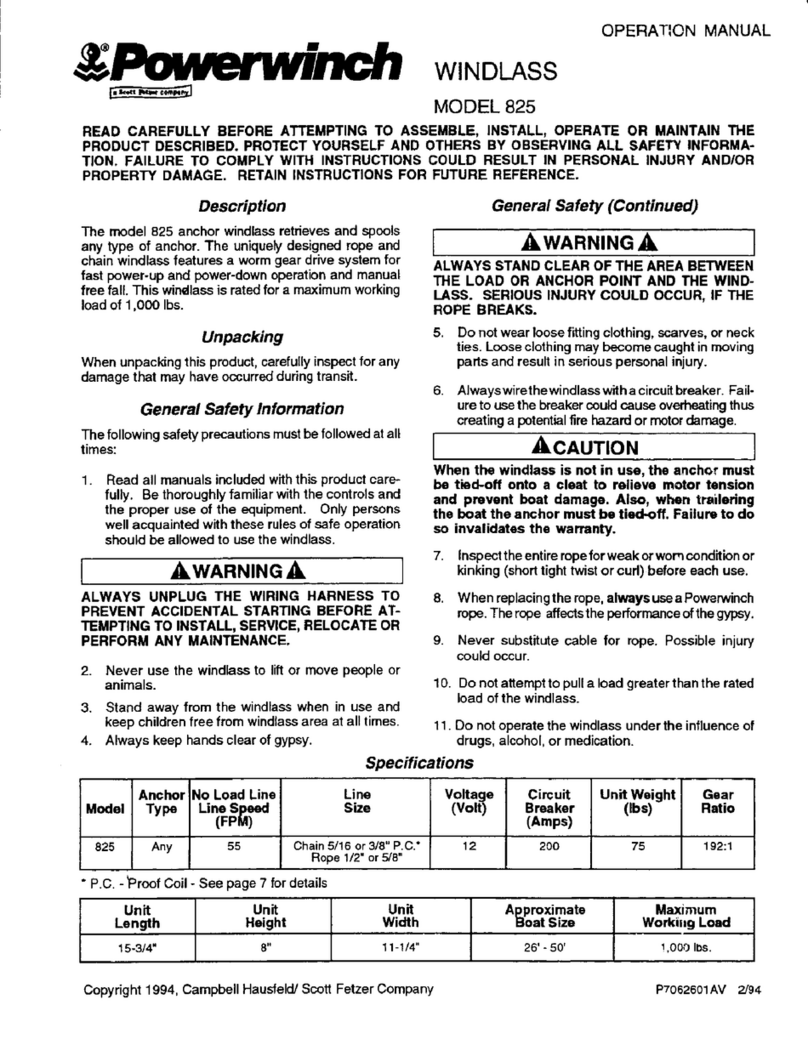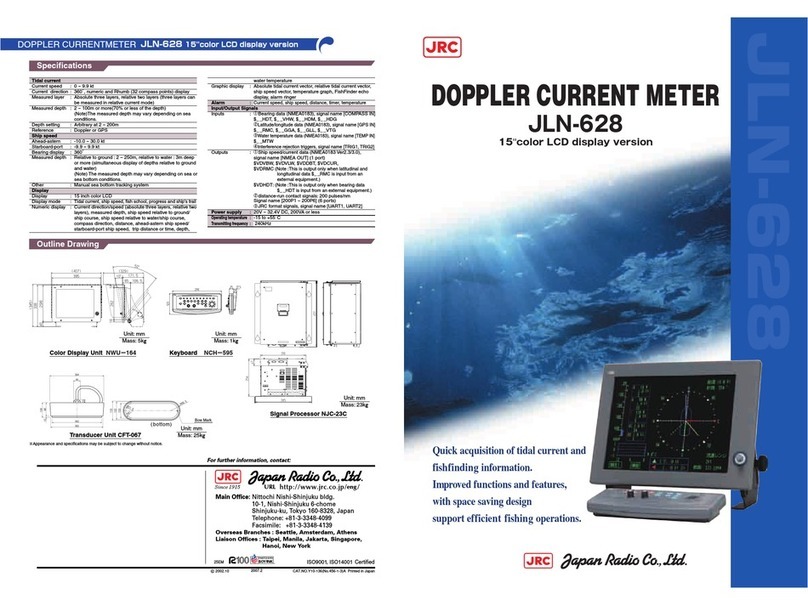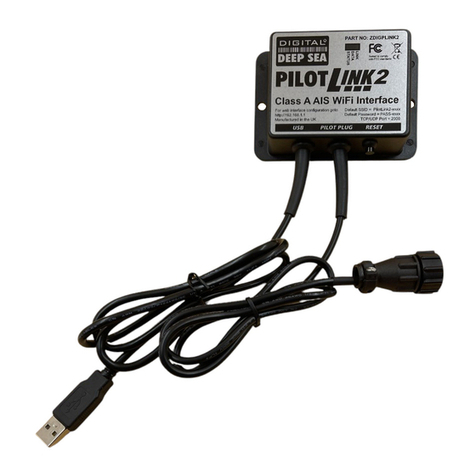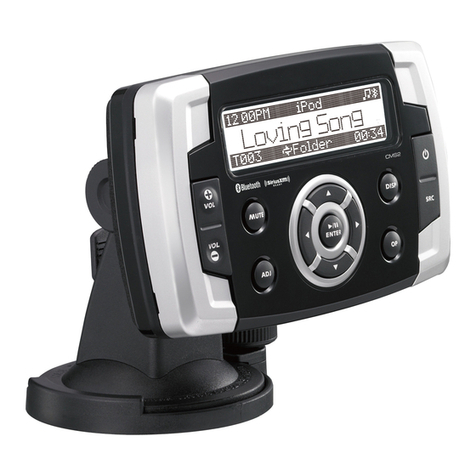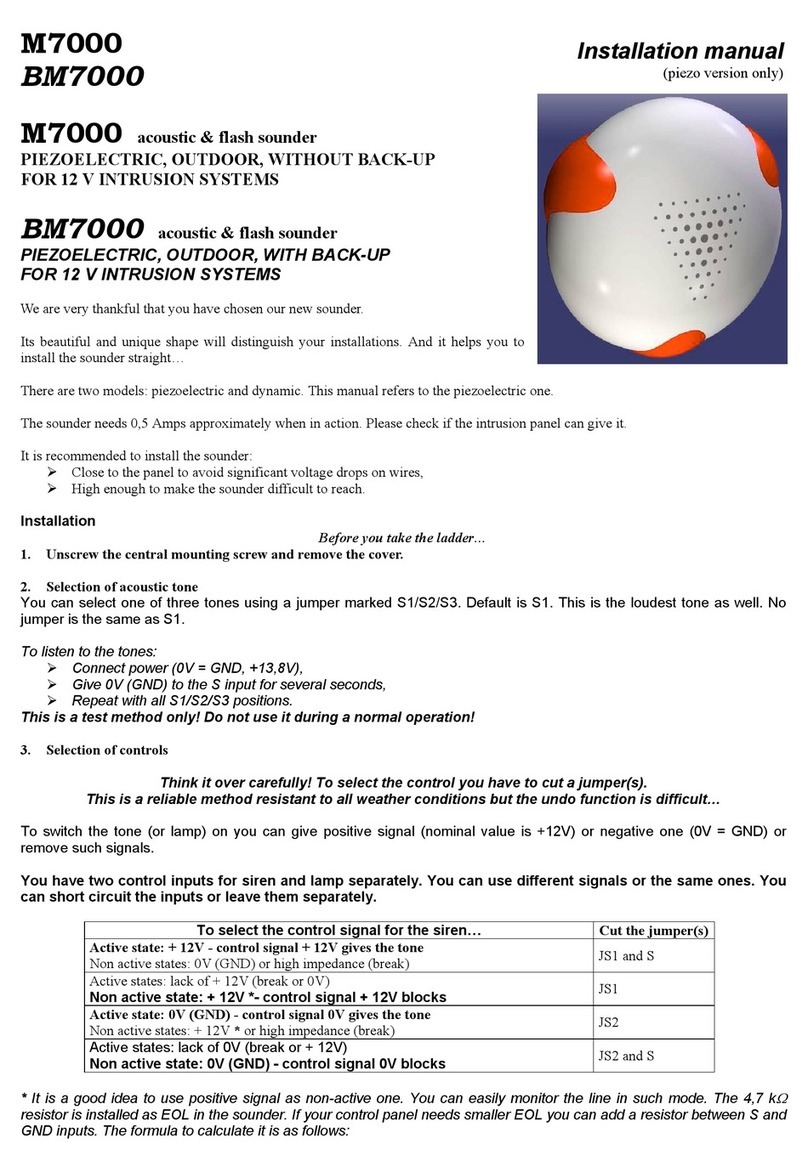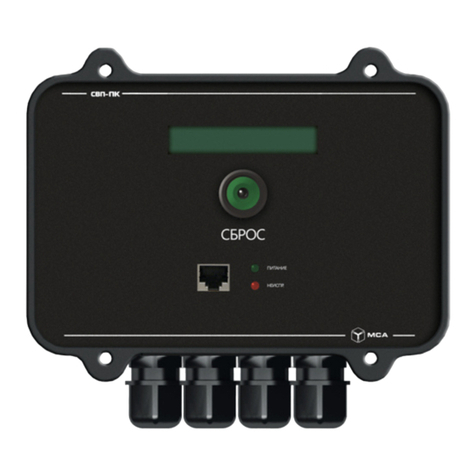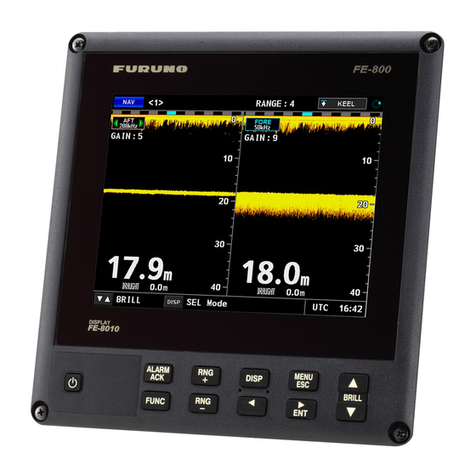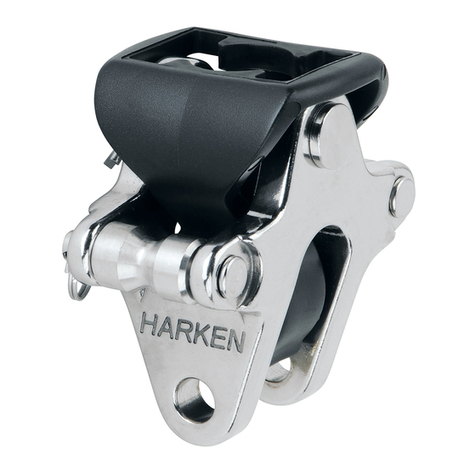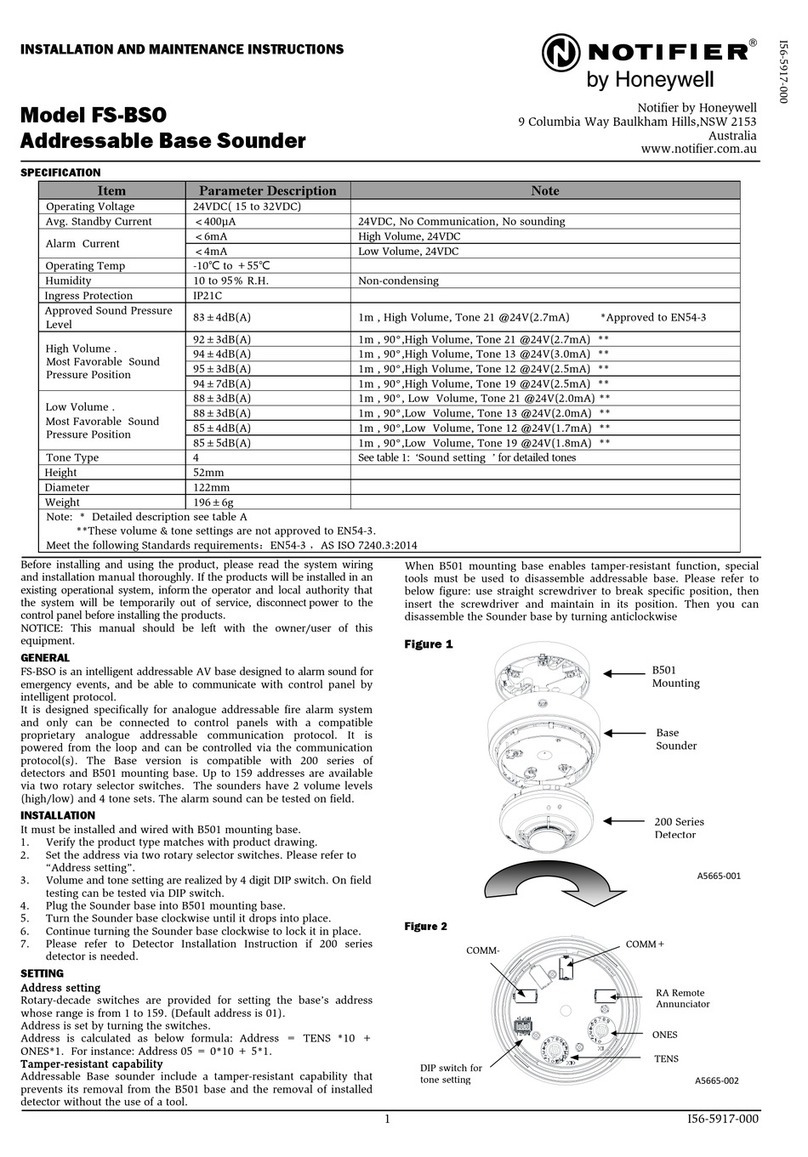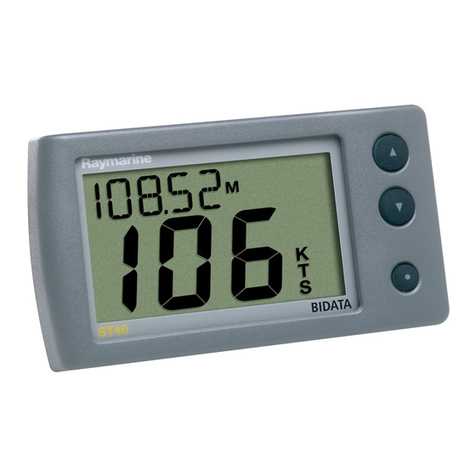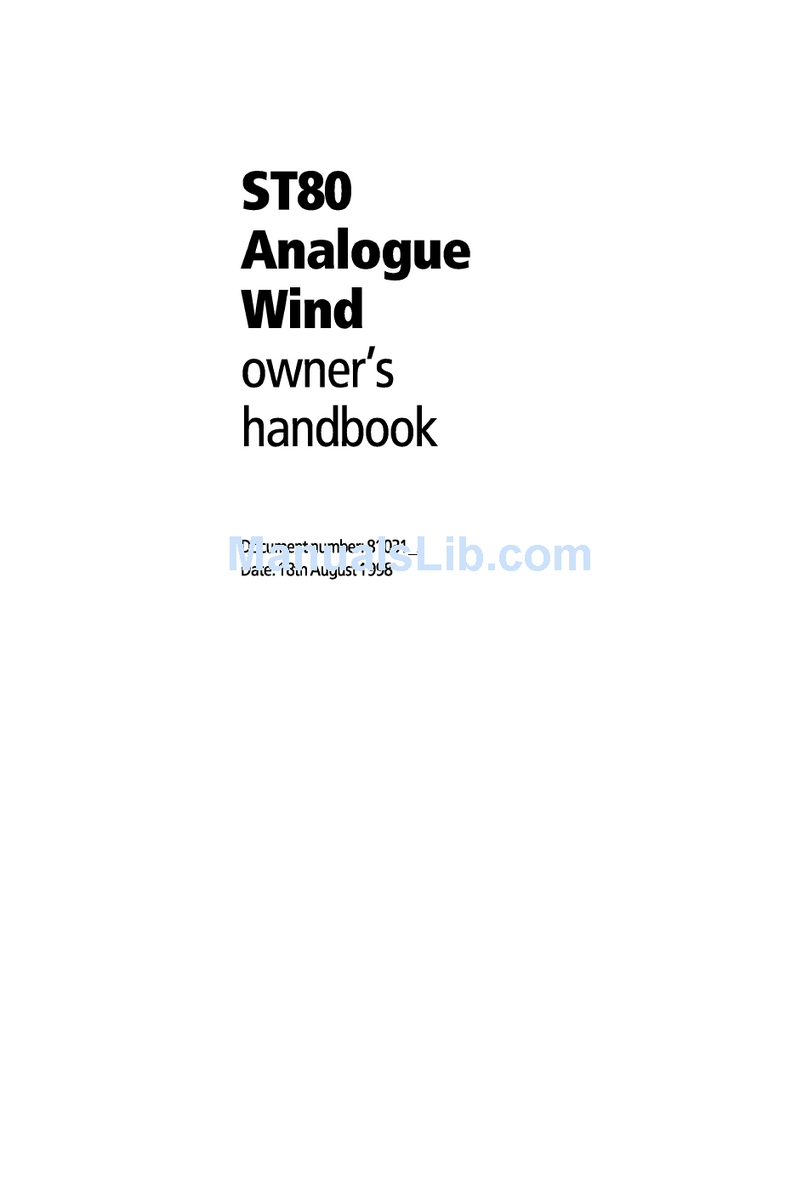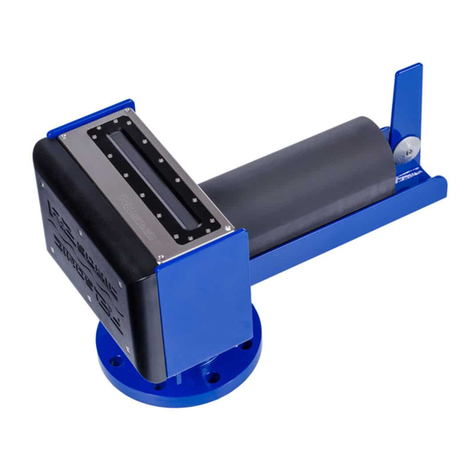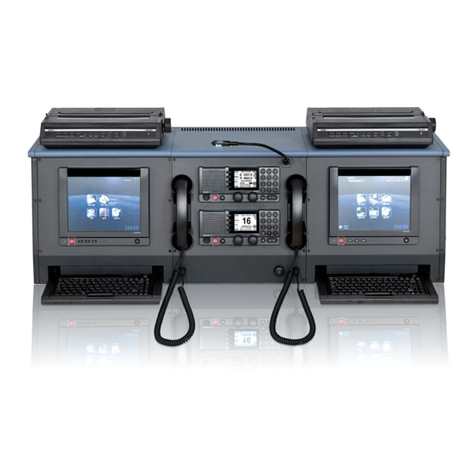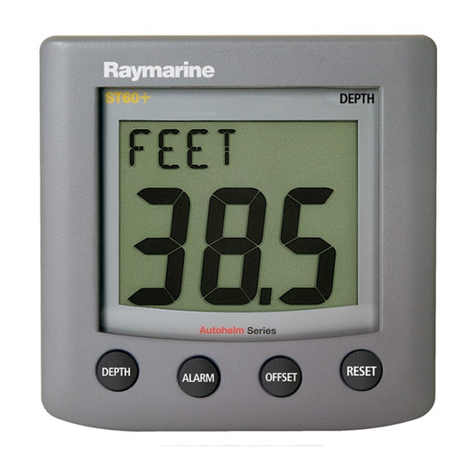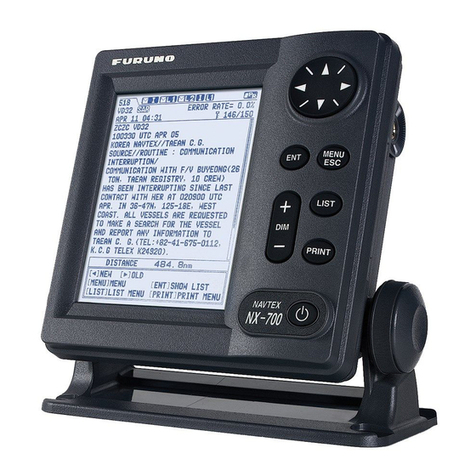GUIDANCE MARINE SceneScan User manual

SceneScan User’s Guide
Guidance Marine Ltd, 5 Tiber Way, Meridian Business Park, Leicester, LE19 1QP, UK
www.guidance.eu.com
www.marine.direct
W
A
R
R
A
N
T
Y
S
e
e
o
u
r
s
t
a
n
d
a
r
d
t
e
r
m
s
o
f
s
a
l
e
Q
U
A
L
I
T
Y
A
S
S
U
R
E
D
3
YEAR
Targetless position
reference sensor

Guidance Marine Ltd,
5 Tiber Way
Meridian Business Park
Leicester
LE19 1QP
UK
Tel: +44 116 229 2600
UK Support: +44 116 229 2665
(365 days a year, 08:00 - 20:00 hours UTC)
USA Support: +1 504 305-1120
Asia Support: +65 6734 6365
Web: www.guidance.eu.com/customer-support
SceneScan User’s Guide
Issue Date: 11/10/2018
Document No: 94-0561-A
Copyright © Guidance Marine Limited. All Rights Reserved.
Copyright in the whole and every part of this document belongs to Guidance Marine
Limited (the “Owner”) and may not be used, sold, transferred, copied or reproduced in
whole or in part in any manner or form or in or on any media to any person other than
in accordance with the terms of the Owner’s Agreement or otherwise without the prior
written consent of the Owner. “SceneScan”is a registered trademark of Guidance Marine
Ltd. All other brand or product names are trademarks or registered trademarks of their
respective companies or organisations.
Serial No:
Date of Shipment from UK:
Sensor Software Version: Client Software Version:
Class 1M Laser Product
Complies with EN 60825-1
Complies with USA CFR 1040.10 & 1040.11
except for deviations pursuant to Laser Notice
No 50 26 Jul 2001
LASER
1M
Print Colour
Black
Print Colour
Yellow
SPECIFICATION
Reference:
Material:
Size:
Colour:
260845
Self adhesive vinyl,
clear laminate
Print colour:
Text:
Yellow and black
“Caution Laser 1M”
DATE:
PROOF:
18/09/17
1
100.00 mm
50.00mm
Scale 1:1
Material
White
White
50mm x 100mm
l2

l3
Table of Contents
Introduction ......................................................................................................5
Welcome�����������������������������������������������������������������������������������������������������������������������6
System Overview����������������������������������������������������������������������������������������������������������7
SceneScan Sensor Part Names �����������������������������������������������������������������������������������8
Getting Started.................................................................................................9
Start Up and Shut Down ��������������������������������������������������������������������������������������������10
Start Up �����������������������������������������������������������������������������������������������������������������������������������������������10
Shut Down�������������������������������������������������������������������������������������������������������������������������������������������10
Targetless Tracking�����������������������������������������������������������������������������������������������������11
Overview of Targetless Tracking����������������������������������������������������������������������������������������������������������11
Blanking Zones������������������������������������������������������������������������������������������������������������������������������������ 11
Tracking Overview �������������������������������������������������������������������������������������������������������������������������������12
Screen Layout ������������������������������������������������������������������������������������������������������������13
Main Screen and Bird's Eye View (BEV)����������������������������������������������������������������������������������������������14
Side Bar�����������������������������������������������������������������������������������������������������������������������������������������������16
Hotkey Buttons������������������������������������������������������������������������������������������������������������������������������������ 17
Menu Pane ������������������������������������������������������������������������������������������������������������������������������������������18
Tracking Information Quality���������������������������������������������������������������������������������������19
Display Settings����������������������������������������������������������������������������������������������������������20
Vessel Orientation�������������������������������������������������������������������������������������������������������22
To set Vessel Orientation���������������������������������������������������������������������������������������������������������������������22
1� Navigate to Advanced > Display Options > Layout� ����������������������������������������������������������������������� 22
2� Click on the vessel outline that points in the required direction������������������������������������������������������ 22
Tracking Basics .............................................................................................. 23
Operating Blanking Zones������������������������������������������������������������������������������������������24
Dynamic Blanking Zone ����������������������������������������������������������������������������������������������������������������������24
Setting the Dynamic Blanking Zone ���������������������������������������������������������������������������������������������������� 24
Scanner Tilt Controls��������������������������������������������������������������������������������������������������25
Scanner Tilt Modes �����������������������������������������������������������������������������������������������������������������������������25
Spirit Level������������������������������������������������������������������������������������������������������������������������������������������� 25
Tracking ����������������������������������������������������������������������������������������������������������������������26
To Start Tracking���������������������������������������������������������������������������������������������������������������������������������� 26
To Stop Tracking����������������������������������������������������������������������������������������������������������������������������������26
Adjusting the Scene Reference Point��������������������������������������������������������������������������������������������������27
Enabling DP Output����������������������������������������������������������������������������������������������������������������������������� 28
Tracking Lost ���������������������������������������������������������������������������������������������������������������������������������������28
Manual Tilt Mode��������������������������������������������������������������������������������������������������������������������������������� 28
Positional Display Modes �������������������������������������������������������������������������������������������29
Range, Bearing & Heading ������������������������������������������������������������������������������������������������������������������29
A and B Axes (A Pos and B Pos)��������������������������������������������������������������������������������������������������������� 30
Multi-Dashboard SceneScan Systems .................................................. 31
SceneScan Dashboard - Monitoring Mode����������������������������������������������������������������32
SceneScan Dashboard - In Command Mode ������������������������������������������������������������33
Support Information ................................................................................... 34
Low Temperature Operation���������������������������������������������������������������������������������������35
Working with Alarms���������������������������������������������������������������������������������������������������36
Filtering Alarms������������������������������������������������������������������������������������������������������������������������������������ 36
Dynamic Positioning Feed������������������������������������������������������������������������������������������37
Network Communications Settings����������������������������������������������������������������������������38
Data Logging �������������������������������������������������������������������������������������������������������������39
Serial Numbers & Software Versions��������������������������������������������������������������������������41
Product Label �������������������������������������������������������������������������������������������������������������������������������������� 41
Software Version Information �������������������������������������������������������������������������������������������������������������� 41
Troubleshooting ........................................................................................... 42
Contact Details������������������������������������������������������������������������������������������������������������������������������������42
How to report issues ���������������������������������������������������������������������������������������������������������������������������42
Problems and Possible Remedies������������������������������������������������������������������������������43
SceneScan Fuse Information �������������������������������������������������������������������������������������44
Installing the SceneScan Hardware....................................................... 45

l4
Table of Contents (continued)
Where to Mount the Sensor ���������������������������������������������������������������������������������������46
Sensor Dimensions and Mounting Template��������������������������������������������������������������47
Installing the Cables.................................................................................... 48
Cable Specifications ��������������������������������������������������������������������������������������������������49
UPS Specifications�����������������������������������������������������������������������������������������������������50
SceneScan Sensor Connections��������������������������������������������������������������������������������51
To Connect a Cable to the SceneScan Sensor �����������������������������������������������������������������������������������51
Connecting the Power Cable ��������������������������������������������������������������������������������������������������������������51
SceneScan Client and DP Feed Connections �����������������������������������������������������������52
Cable Routing Diagrams ��������������������������������������������������������������������������������������������53
Installing the Control PC............................................................................ 55
Installing SceneScan Client Software onto a Computer ��������������������������������������������56
Upgrading the Sensor Software���������������������������������������������������������������������������������57
Conguring the SceneScan System ..................................................... 58
Using the Service Interface ����������������������������������������������������������������������������������������59
Network Communication Settings �����������������������������������������������������������������������������60
Vessel Parameters������������������������������������������������������������������������������������������������������62
Static Blanking Zones ������������������������������������������������������������������������������������������������65
Dynamic Positioning Feed Configuration�������������������������������������������������������������������66
DP Feed Behaviour ����������������������������������������������������������������������������������������������������67
System Parameters ����������������������������������������������������������������������������������������������������69
DP Message Types�����������������������������������������������������������������������������������������������������71
NMEA0183R Format ��������������������������������������������������������������������������������������������������������������������������� 71
NMEA0183P Format����������������������������������������������������������������������������������������������������������������������������71
ASCII17 Format �����������������������������������������������������������������������������������������������������������������������������������72
Kongsberg Standard ��������������������������������������������������������������������������������������������������������������������������� 72
MT Custom DP String ������������������������������������������������������������������������������������������������������������������������� 73
Rolls-Royce Custom DP String �����������������������������������������������������������������������������������������������������������74
Kongsberg (Custom) ���������������������������������������������������������������������������������������������������������������������������75
Service Schedule��������������������������������������������������������������������������������������������������������76
SceneScan Installation Checklist �������������������������������������������������������������������������������77
Index���������������������������������������������������������������������������������������������������������������������������78
Document History ������������������������������������������������������������������������������������������������������80

l5
Introduction
This section provides an introduction and overview of the SceneScan system.
It contains the following sections:
• Welcome (page 6)
• System Overview (page 7)
• SceneScan Sensor Part Names (page 8)

l6
Welcome
Welcome to the SceneScan User Guide. It explains how to:
• Use the SceneScan system
• Physically install the system
• Install and operate the Dashboard software
• Install the Service Interface
!Note: Installation of a SceneScan system should be
carried out by a suitably qualied and competent
engineer.

l7
System Overview
The SceneScan System is a high accuracy rotating laser Sensor that provides positional
information to allow automated approach and/or station keeping relative to a structure or
vessel. It is designed to be semi-portable and straightforward to operate.
Its key elements are:
• The SceneScan Sensor: The marine grade SceneScan Sensor is mounted on the
vessel (typically on the wheelhouse) as required. The SceneScan Sensor emits eye-safe
infrared light and detects the reections received back from one or more designated
structures or vessels.
• The SceneScan Client Software: There are two key pieces of software:
• The SceneScan Service Interface: The SceneScan Service Interface is used
for system installation and maintenance.
• The SceneScan Dashboard: The SceneScan Dashboard generates a visual
representation of the scene detected by the SceneScan Sensor. It gives the
DP Operator control of the system and the data stream being fed to the DP
system.
Both pieces of software run under Windows™ on a Type 3 Marine Processor or other
computer providing the minimum system requirements (See page 55).
The SceneScan system operates dierently to other local position reference systems in that
it does not require any type of target to be placed on the asset that is being approached or
used for station keeping.
It scans the vessel or structure and produces a map. This map is compared to the current
scan by the SceneScan Sensor navigation algorithm, which is used to track a local position.

l8
SceneScan Sensor Part Names
The diagram below shows the key parts of the Sensor unit and the various names that are
used throughout this guide:
Optical Window
Rotor
Base Plate
Sensor Information
Display
Access Plate
Cable Gland Plate
Client Data
Power
DP Feed 2
DP Feed 1

l9
Getting Started
This section contains the following pages:
• Start Up and Shut Down (page 10)
• Targetless Tracking (page 11)
• Screen Layout (page 13)
• Tracking Information Quality (page 19)
• Display Settings (page 20)
• Vessel Orientation (page 22)

l10
Dashboard screen with Sensor suspended Dashboard screen with Sensor scanning
Dashboard
In Command
Dashboard
Monitoring
Start Up and Shut Down
Start Up
To Start SceneScan Dashboard
1. Ensure that the SceneScan Sensor is powered on.
2. Double-click on the SceneScan Dashboard icon.
(Or run the SceneScan Dashboard from
Start > All Programs > Guidance Marine Ltd >
SceneScan > SceneScan Dashboard).
3. The Dashboard display screen will appear.
If the Sensor is currently suspended, the main part of the
screen will be greyed out. Click on the Resume button
in the side bar in order for the Sensor to begin scanning
and for the results to be displayed on the screen. If the
Sensor was already scanning, then the current scene
will be displayed.
Shut Down
To Suspend, Exit or Disconnect
1. Click on the Guidance button in the lower left corner of the screen.
This will reveal buttons in the side bar as follows: (see right).
• Suspend - Places the Sensor into a‘sleep mode’. The rotor ceases spinning and the
scanner tilt returns to a xed state. The unit can be returned to full operation via a
Resume command from the Dashboard. This mode is suitable for use when travelling
between locations.
• Disconnect - Ceases communications between the Dashboard and Sensor and
causes the main part of the screen to be greyed out. Does not cause the Sensor to stop
spinning or tracking the scene.
• Suspend And Exit - Places the Sensor into the same‘sleep mode’ as the suspend
command (discussed above) and also closes the SceneScan Dashboard program.
• Exit - Closes down the Dashboard without aecting the Sensor.
See Multi-Dashboard
SceneScan Systems
(page 31) for
information on In
Command/Monitoring
functionality.

l11
Targetless Tracking
Overview of Targetless Tracking
Traditional relative positioning Sensors rely on placing targets on the structure or vessel
which the Sensor then detects and can report a position relative to. SceneScan removes
the requirement to place targets into the scene and instead provides tracking information
relative to natural or man-made structures within the Sensor eld of view. It achieves this
by matching its current observation of the scene against previous observations of the same
scene, in order to determine the motion of the Sensor between observations.
In order to maximise the performance of this approach, the Sensor rst calculates the most
reliable and informative section of the scene to track o. This step is called tilt optimisation,
and involves the Sensor scanning through various sections of the scene to work out which
tilt angle to track at.
Once a suitable section has been selected the system starts tracking and reporting the
position of the Sensor within the scene. As the Sensor moves and the view of the scene
changes, the Sensor will automatically update its model of the scene while tracking without
any need for user intervention.
Blanking Zones
!Warning: Before starting tracking it is critical that Blanking Zones have been
correctly congured to mask out regions of the scene that we do not wish to
track.
Two types of blanking zone can be congured on a SceneScan system:
• Fixed Blanking Zones – These can be exclusively congured using the SceneScan
Service Interface. Fixed blanking zones are the Vessel Blanking Zone (Vessel
Parameters) and the Static Blanking Zones.
• Operating Blanking Zones – These can be amended in the Dashboard when the
system is running, even during tracking. Operating blanking zones are the Dynamic
Blanking Zone and the Minimum Range Filter.
For information on how to set Blanking Zones see the following sections:
• Operating Blanking Zones on page 24
• Vessel Parameters on page 62
• Static Blanking Zones on page 65

l12
Targetless Tracking (Continued)
Tracking Overview
Start Tracking
Once Blanking Zones have been congured the operator can command the Sensor to start
tracking.
SceneScan Tracking is inuenced by the operator’s choice of tilt mode (see the Scanner Tilt
Controls section on page 25 for further information):
• Auto - When starting tracking, the scanner will automatically“sweep” through a
range of angles to determine the most stable scene for tracking purposes.
• Manual - This mode is used to manually tilt the optics to point at the desired part of the
scene. When starting tracking, the scanner will use the currently selected angle and no
“sweep”will be performed.
Once a suitable tilt angle has been chosen tracking will start and the scanner tilt angle will
automatically adjust as the range to the asset changes. This is to ensure that the same part
of the scene is used throughout the tracking session.
Scene Reference Point
Once the Sensor has started tracking, it will start reporting its position relative to the Scene
Reference Point.
By default SceneScan will select the centre of the tracked scene for the scene reference
point, with a heading of 0°.
This behaviour should be sucient for most users. However users are also able to edit the
Scene Reference Point, altering both its position and heading. This might be done to align
to the heading of a tracked vessel, or to position oneself against the edge of a platform or
quayside.
!Warning: Changing the Scene Reference Point will disable the DP Feed. This is
done because altering the point can dramatically alter the output from the DP
Feeds. The DP Feeds must be re-enabled by following the below procedure.
Enabling DP Output
Once tracking, the Dashboard will display tracking and scene data, but the Sensor will not
output a DP feed. The reason for this is to allow the operator to review the detected scene,
and to set a Scene Reference Point of their choice before enabling DP Feed output.
When the operator is happy with the tracking data displayed on the Dashboard the DP
output can be enabled and the Sensor will start to report valid position telegrams to the DP
system.

l13
Screen Layout
The SceneScan Dashboard screen
is split into three distinct sections,
these are:
• 1. Main Screen and Bird's
Eye View (BEV) (see page
14)
• 2. Side Bar (see page 16)
• 3. Menu Pane (see page
18)

l14
Main Screen and Bird's Eye View (BEV)
The circular BEV shows the observable scene and Scene
Reference Point relative to the Sensor and vessel.
The Figure on the right labels elements on the BEV and its
periphery.
Vessel Outline
The Vessel Outline in the centre of the BEV represents the
ship on which the SceneScan system is located, and the red
dot denotes the SceneScan Sensor. The rotating fan-shaped
symbol represents the laser beam emitted by the rotor as it
turns.
The whole BEV can be rotated in steps of 90° to allow for
dierent positions of the monitor. The size and shape of the
vessel outline and the position of the Sensor’s red dot within it
can be congured using the SceneScan Service Interface.
Blanking Zone
The Blanking Zone is an area dened by the user in order
to blank-out parts of the scene that should not be used for
tracking. During each revolution of the Sensor, when the rotor
enters this sector the laser stops pulsing. The Blanking Zone is
adjusted to suit the current operating conditions.
Range Circles
The Range Circles are a visual guide that help to show the
distances between the Sensor vessel and the detected
reections. Distances are given in metres from the centre of
the Sensor.
Radial Markers
Around the circumference of the BEV are marked angles in
degrees, clockwise from the bow of the vessel.
Screen Layout (Continued)

l15
Screen Layout (Continued)
Scene Data
The Scene Data shows the scene detected by the SceneScan Sensor.
Note: The Scene Data can be constrained to a traditional circular BEV, or expanded to ll
the central area using the Toggle BEV Shape button on the Hotkeys Tab, or by pressing
F8.
Scene Reference Point
The Scene Reference Point shows the point within the scene about which SceneScan is
tracking.
Bearing and Heading Tags
The bearing tag and the heading tag are displayed when tracking is in progress, to indicate
the target’s bearing and the vessel heading on the Radial Marker.
Data Logging Indicator
This symbol is displayed when data is being logged to disk.
Zoom Control
Allows a user to zoom in (+) and zoom out (-) of the BEV. Click on the left-hand side of the
control (marked '-') to zoom out of the display and on the right-hand side ('+') to zoom in.
System Status
This consists of two elds:
Primary
The primary status display is positioned in the upper-right corner of the main pane. It
indicates the current status of the system, for example System Running Normally or System
Suspended.
Secondary
The secondary status display is positioned in the lower-right corner of the main pane. It
displays a ashing message for a number of seconds in order to conrm an action taken
by the user. It can also display a persistent, static message if there is a communications
problem.
Hotkeys Tab
The Hotkeys Tab is located on the right hand edge of the main pane. Clicking on the tab will
open the Hotkeys Menu.

l16
Screen Layout (Continued)
Side Bar
The Side Bar, the black pane on the left of the BEV, contains control and display
components in addition to the coordinates panel.
After pressing the
Guidance button:
Toggle Coordinate Type
Signal Quality
Coordinate Data
DP Message Format
Current Tilt Mode
and Command Mode
Start/Stop Tracking Button
(It is always visible for SceneScan)
Guidance Button

Hotkeys Tab
l17
Hotkey Buttons
Selecting the Hotkeys tab on the right-hand side of the main
screen activates the Dashboard Hotkeys menu.
Screen Layout (Continued)
The following keys - and the corresponding buttons on the Dashboard Hotkeys menu - act as
shortcuts to application functions.
F1 Display Help Menu
F2 Toggle between the About System pane and the BEV display
F3 Rotates the Vessel Clockwise
F4 Rotates the Vessel Anti-Clockwise
F8 Toggle between displaying a traditional circular BEV or Full Scene mode
F9 Toggle between the day view and night view
F10 Capture a screenshot of the Dashboard interface and save it to disk
F11 Toggle between normal window layout and full screen layout
F12 Toggle between enabling and disabling the on-screen keyboard
Alt+L Start Manual Data Logging (available when no tracking operation is in progress):
Starts data logging and changes the button to Stop Data Logging
Ctrl + Zoom-In
Ctrl - Zoom-Out
Esc When in operation conrmation mode, cancel the current operation request
Enter When in operation conrmation mode, conrm the current operation request

l18
Screen Layout (Continued)
Menu Pane
The Menu Pane, located across the bottom of the SceneScan Dashboard Screen, is not always visible. It appears when one of the
Tracking, Tilt or Advanced buttons near the foot of the Side Bar are pressed, which causes the Bird's Eye View (BEV) to contract
towards the top of the screen. Clicking the same button for a second time causes the Menu Pane to disappear and the BEV to be
restored to full size.

l19
Tracking Information Quality
Once tracking is under way the Data Quality Bar indicates the level of condence the system has in the quality of the scene data that is being acquired. The greater the size of the lled
portion of the Data Quality Bar, the greater the level of condence in the information.
The colour of the Data Quality Bar and positional data also reects the level of condence: RED, YELLOW or GREEN, with GREEN meaning highest condence.
When tracking, the Data Quality Bar and positional data disappear and are replaced with a warning message if the system loses track of the scene.

l20
Display Settings
To provide ample visibility during daytime operation and to limit glare during night shifts,
SceneScan Dashboard oers two display settings: Day Mode and Night Mode. In either
mode the brightness can be further adjusted by the Screen Brightness control.
To change day/night mode and adjust brightness:
1. Navigate to Advanced > Display Options > Display Settings.
2. Click on one of the Day / Night Mode symbols.
3. Click on the left side of the Screen Brightness control to dim the screen and on the
right to make it brighter.
Alternatively, to toggle between day and night mode, use the keyboard shortcut F9 or the
Toggle Day/Night Mode button in the Dashboard Hotkeys panel.
Night Mode
Day Mode
This manual suits for next models
1
Table of contents
Other GUIDANCE MARINE Marine Equipment manuals
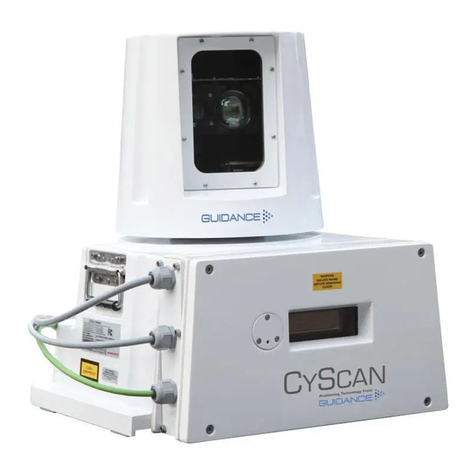
GUIDANCE MARINE
GUIDANCE MARINE CyScan Assembly instructions
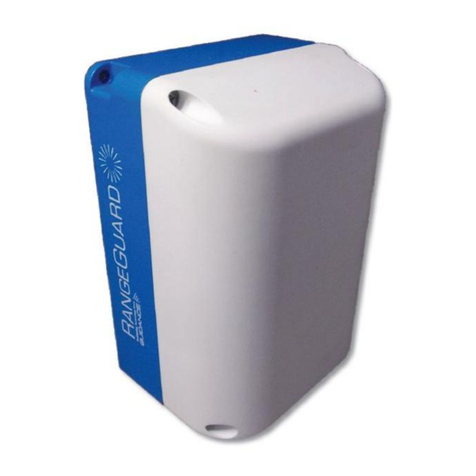
GUIDANCE MARINE
GUIDANCE MARINE RangeGuard Assembly instructions
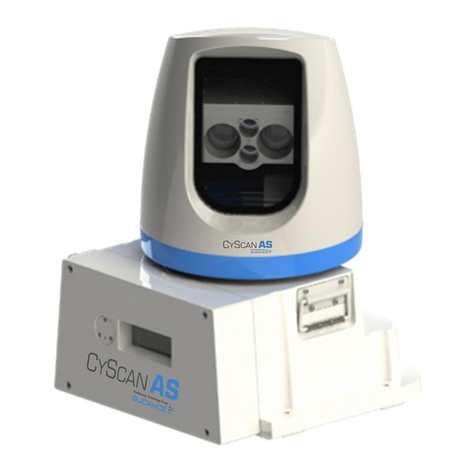
GUIDANCE MARINE
GUIDANCE MARINE 20- Series Assembly instructions
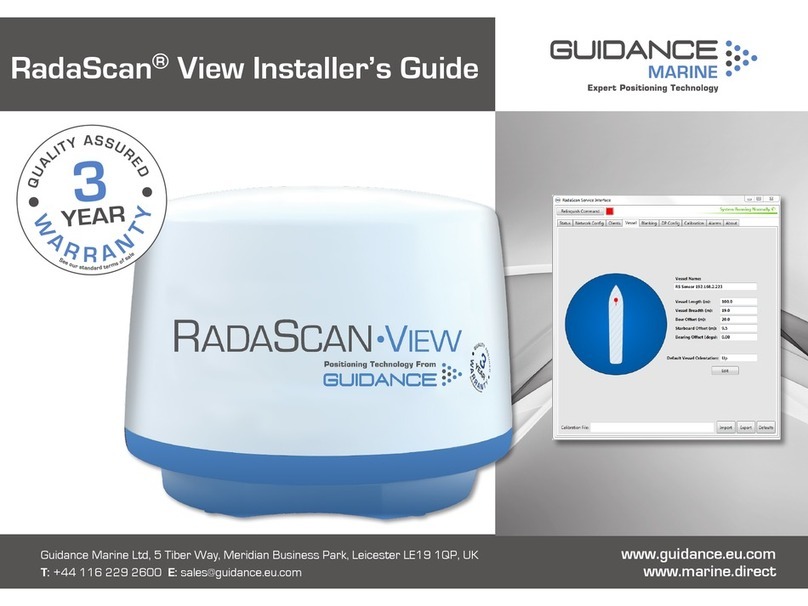
GUIDANCE MARINE
GUIDANCE MARINE RadaScan View Assembly instructions
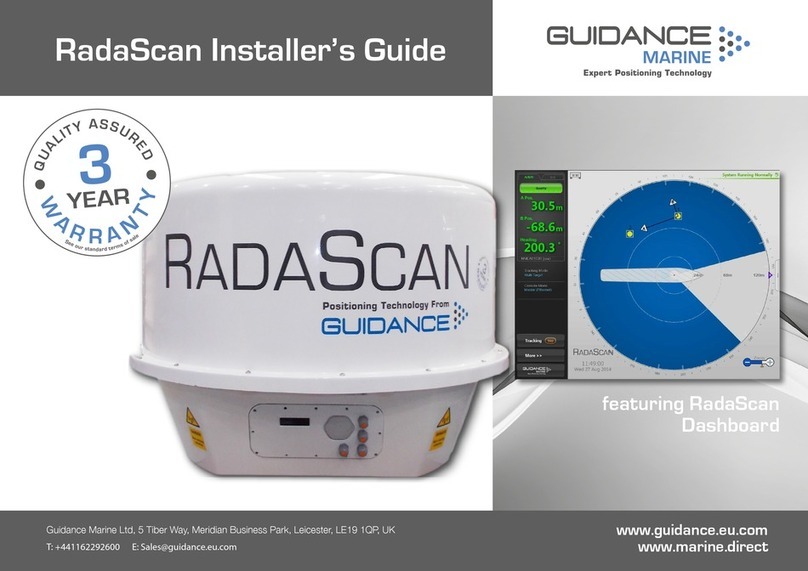
GUIDANCE MARINE
GUIDANCE MARINE RadaScan View Assembly instructions

GUIDANCE MARINE
GUIDANCE MARINE Artemis Mk6 Assembly instructions
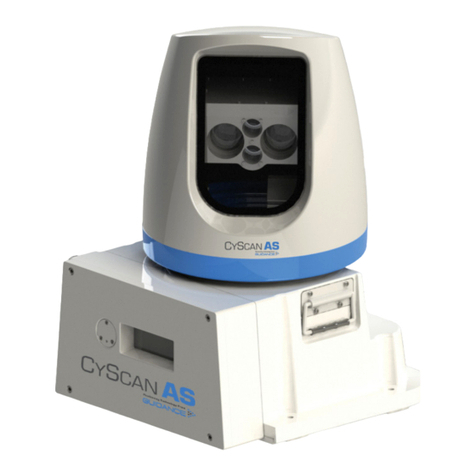
GUIDANCE MARINE
GUIDANCE MARINE CyScan AS Manual

GUIDANCE MARINE
GUIDANCE MARINE RangeGuard Monopole Manual
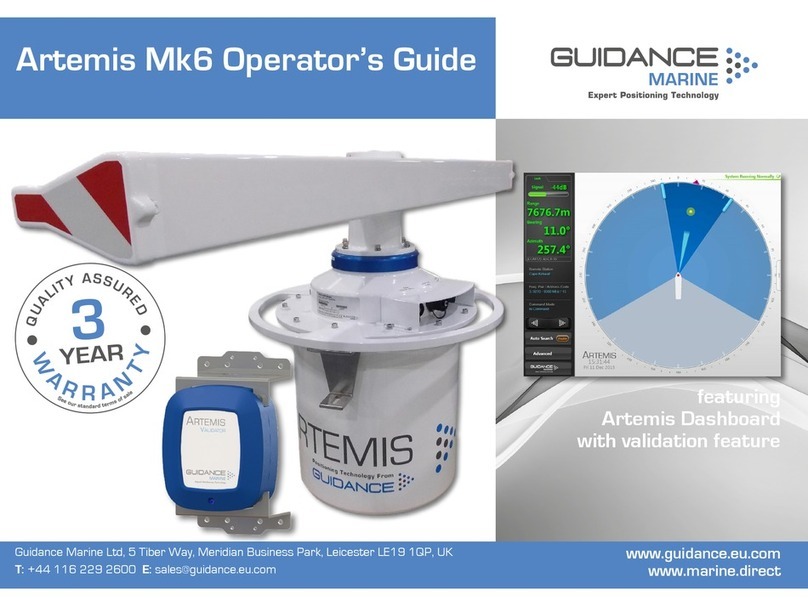
GUIDANCE MARINE
GUIDANCE MARINE Artemis Mk6 Manual
